- Anthony D'Amico
- Albums and Singles
 Three years after the mesmerizing Homage to Dick Raaijmakers, Thomas Ankersmit is back with yet another bombshell inspired by an underappreciated electronic music visionary. In this case, that visionary is Maryanne Amacher, who also happens to be the person who fatefully introduced Ankersmit to his Serge modular synth. Naturally, the Serge retains its central role from the Raaijmakers album and Ankersmit masterfully wields it again to conjure up another hallucinatory swirl of phantom sounds and strange aural phenomena. The conceptual themes are bit different this time around, however, as Ankersmit explores the ideas laid out in Amacher's "Psychoacoustic Phenomena in Musical Composition: Some Features of a Perceptual Geography" essay. Unsurprisingly, Ankersmit does a stellar job psychoacoustically mapping out his own compelling perceptual geography with this release, but his most striking bit of sorcery actually occurs off the album, as the piece was engineered to trigger otoacoustic emissions, which are "sounds emanating from inside the head, generated by the ears themselves."
Three years after the mesmerizing Homage to Dick Raaijmakers, Thomas Ankersmit is back with yet another bombshell inspired by an underappreciated electronic music visionary. In this case, that visionary is Maryanne Amacher, who also happens to be the person who fatefully introduced Ankersmit to his Serge modular synth. Naturally, the Serge retains its central role from the Raaijmakers album and Ankersmit masterfully wields it again to conjure up another hallucinatory swirl of phantom sounds and strange aural phenomena. The conceptual themes are bit different this time around, however, as Ankersmit explores the ideas laid out in Amacher's "Psychoacoustic Phenomena in Musical Composition: Some Features of a Perceptual Geography" essay. Unsurprisingly, Ankersmit does a stellar job psychoacoustically mapping out his own compelling perceptual geography with this release, but his most striking bit of sorcery actually occurs off the album, as the piece was engineered to trigger otoacoustic emissions, which are "sounds emanating from inside the head, generated by the ears themselves."
The album fades into existence with a quietly oscillating electronic hum that gradually becomes increasingly disrupted by squelches, blurts, crackles of static, swells of feedback, and something resembling shortwave radio transmissions. That is admittedly not radical territory for a vintage modular synth album, yet each sound feels like a meaningful building block that incrementally moves the composition closer and closer to one of Ankersmit's beguiling set pieces. The first of those starts taking shape around the 9-minute mark, eventually reaching a crescendo that sounds like asteroids slowly smashing into the hull of my spaceship while I fight off a swarm of psychedelic crickets. Things only get wilder and more intense from there, as the simmering brew of abstract electronic sounds repeatedly blossoms into striking new forms, at times even resembling a killer noise guitar act. The first truly "wow" moment hits around the 16-minute mark, as a haze of beeps, buzzes, and other squiggling and squirming electronic sounds starts to feel like it is actually burrowing into my goddamn mind. That is a hell of a trick, as the piece seems to transform as I turn my head from side to side. I suspect the live experience is even more transcendent, as Ankersmit always "tunes his instrument to the resonant characteristics of the performance space, so that the sounds activate the structure." He clearly takes the physics of sound very seriously and it pays off beautifully. Naturally, there are more dazzling climaxes as the album unfolds, including one that starts forming around the 26-minute mark in which Ankersmit sounds like the best damn noise artist on the planet. I easily could throw around some more colorful terms describing what transpires ("lysergic space aviary" and "gibbering, squelching cacophony" spring to mind), but the only thing that matters is that Perceptual Geography contains some of the most challenging, absorbing, and masterfully executed sound art that I have ever heard.
Samples can be found here.
Read More
- Anthony D'Amico
- Albums and Singles
 Newly reissued on vinyl (and digitally) with beautiful new artwork, Paradise Lost was originally released as a cassette back in 2019. As is the norm for many Chalk releases, additional details beyond the fact that it exists are quite thin, but this one takes that to an amusing extreme, as the Discogs entry for the original cassette notes "label and artist name are not listed on the release." That said, I believe I can say with moderate certainty that these two longform pieces were recorded on an 8-track reel-to-reel between 2016 and 2018 and that Chalk primarily played a synthesizer. Also, his Ghosts on Water bandmate Naoko Suzuki contributed some very well-hidden vocals and created the artwork for the original tape. To some degree, it makes sense that this album originally surfaced as a very limited-small run tape, as it does not feel like one of Chalk's more significant opuses, but it is quite an enjoyable and interesting release nonetheless. In fact, the title piece feels like legitimately prime Andrew Chalk material to me, though I suspect many longtime fans will be more fascinated by the surprising and divergent "This Pendent World."
Newly reissued on vinyl (and digitally) with beautiful new artwork, Paradise Lost was originally released as a cassette back in 2019. As is the norm for many Chalk releases, additional details beyond the fact that it exists are quite thin, but this one takes that to an amusing extreme, as the Discogs entry for the original cassette notes "label and artist name are not listed on the release." That said, I believe I can say with moderate certainty that these two longform pieces were recorded on an 8-track reel-to-reel between 2016 and 2018 and that Chalk primarily played a synthesizer. Also, his Ghosts on Water bandmate Naoko Suzuki contributed some very well-hidden vocals and created the artwork for the original tape. To some degree, it makes sense that this album originally surfaced as a very limited-small run tape, as it does not feel like one of Chalk's more significant opuses, but it is quite an enjoyable and interesting release nonetheless. In fact, the title piece feels like legitimately prime Andrew Chalk material to me, though I suspect many longtime fans will be more fascinated by the surprising and divergent "This Pendent World."
One interesting bit of information that I stumbled upon while researching this album was a blurb from Daisuke Suzuki's Siren Records noting that this album "strongly recalls the atmosphere of home recording in the '80s." I got exactly the same impression myself from the opening "This Pendent World," as I had scribbled down that it felt like a duel between two very different artists from the golden age of private press New Age: one kosmische-inspired synth wizard hellbent on taking me to space and another guy who just wants to lull me into a blissful, bucolic reverie with some pretty string swells. There are also some traces of a third guy who closely resembles contemporary Andrew Chalk, as there is a loose melodic theme of wobbly, liquid tones likely originating from an electric piano. While that is certainly an odd collision to encounter on a Milton-themed Andrew Chalk record, it works surprisingly well, amiably and amorphously drifting and curling like a trail of smoke. The following "Paradise Lost" is similarly form-averse, but in a much more compelling way, as its frayed and smeared swells of warm synth tones feel teasingly just out of focus. Additionally lurking within the artfully blurred dream-fog are a slow-motion tumble of acoustic guitar fragments, ghostly traces of Naoko's lovely singing, and probably some pedal steel too. I am tempted to make a wince-inducing pun on the album title here, but "Paradise Lost" is simply too beautiful of a piece to deserve such an indignity, vividly evoking the slowly streaking and shifting colors of an especially gorgeous sunset.
Samples can be found here.
Read More
- Eve McGivern
- Albums and Singles
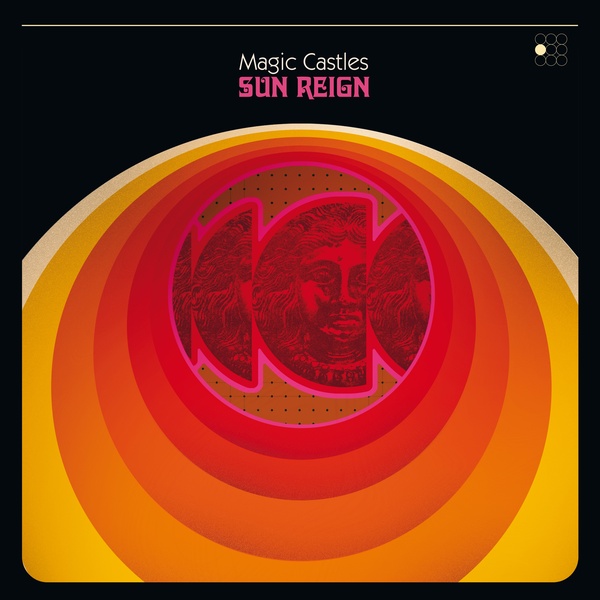 Minneapolis-based Magic Castles make a glorious return with their fourth release on Anton Newcombe's label, weaving together jangly hooks and minor chords and slathering it with fuzz. The release is triumphant in that it was released at all, following the band's 2016 hiatus and songwriter Jason Edmonds' near-fatal car accident in 2019, not to mention contending with a pandemic. Sun Reign is a lush and dreamy masterpiece of layered musical intensities, awash in evocative imagery and heartful melodies.
Minneapolis-based Magic Castles make a glorious return with their fourth release on Anton Newcombe's label, weaving together jangly hooks and minor chords and slathering it with fuzz. The release is triumphant in that it was released at all, following the band's 2016 hiatus and songwriter Jason Edmonds' near-fatal car accident in 2019, not to mention contending with a pandemic. Sun Reign is a lush and dreamy masterpiece of layered musical intensities, awash in evocative imagery and heartful melodies.
The music grabs hold with the plaintive "Sunburst" and never lets go, producing a perfume of joyful wistfulness atop minor chords, dropping low to rise airborne in exuberant joy, vocals low in the mix in favor of musical atmosphere and jangle onslaught. Hazy vocal harmonies interplay with sparkling guitar, ethereal violins, and a gentle yet encouraging rhythm section, preferring to drift comfortably through a paisley landscape but unafraid to cross into pop or folk territories. Case in point, "Lost Dimension" would appear to be the most blissed-out title, but at its heart is a song of longing: "Feeling so torn in two / caused me to lose time and space / gotta leave this empty space / Lost in another dimension without you." Many of the tracks reference a certain nostalgia for sixties folk, brought firmly to modern terra firma riding on a darker, but not despairing, energy. "Ode to the Wind," "Valley of Nysa" and "Surmise" are particularly reminiscent of that timeframe, suggestive of bands like Pentangle or Fairport Convention but with a thick topcoat of distortion and a paisley pop sensibility dialed to the maximum. The result is a masterful blend of evocative atmosphere and memorable melodies fueled by fuzzy guitars and passionate musicians.
The video for "Lost Dimension" can be found here.
Read More
- Anthony D'Amico
- Albums and Singles
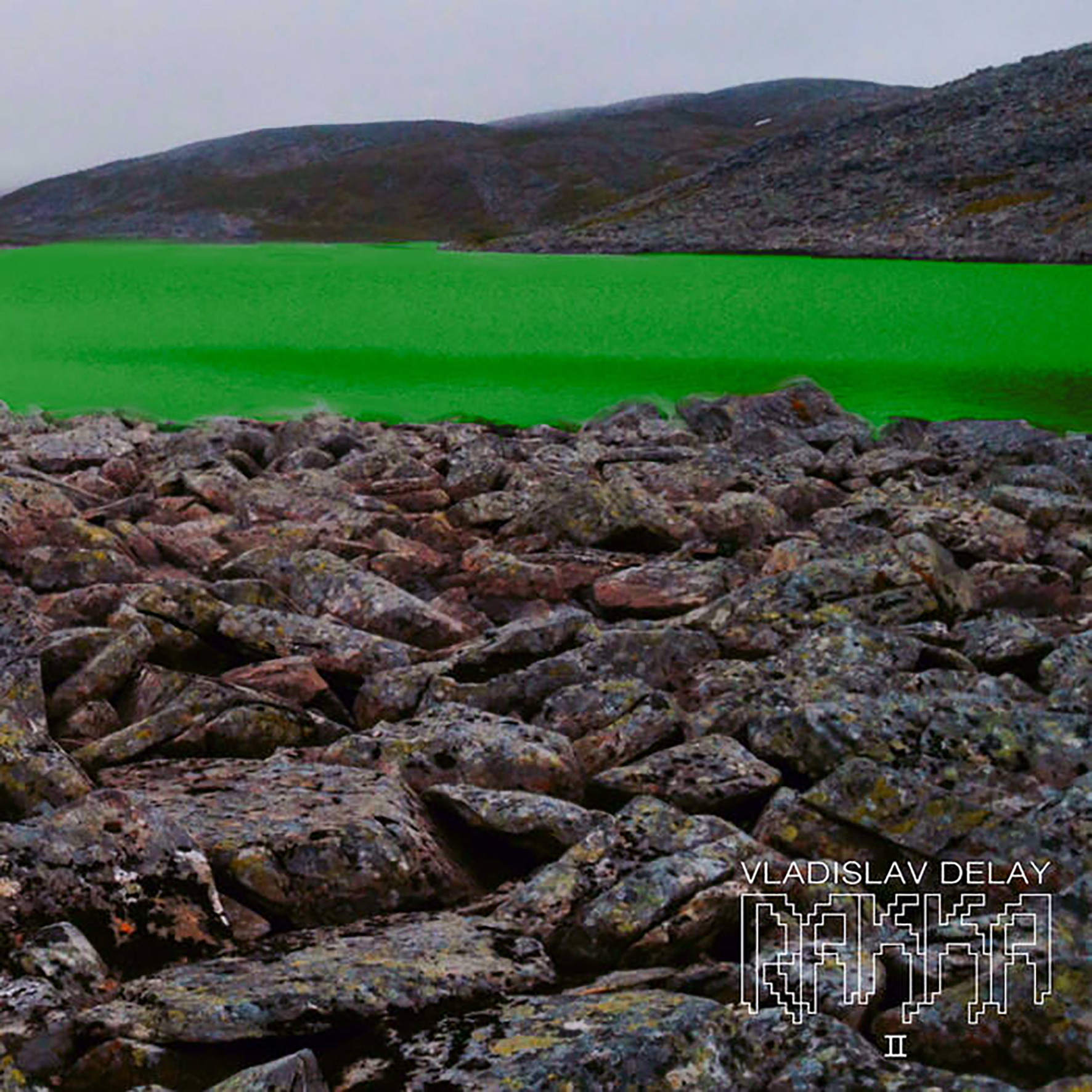
The return of Sasu Ripatti's beloved and long-dormant Vladislav Delay project last year was quite a well-received one, suggesting that fans were unfazed by the fact that Rakka marked a sharp detour from the work that made the project so beloved in the first place. Naturally, that warranted a sequel and Rakka II sticks with roughly the same aesthetic as its predecessor, though Ripatti envisions this latest release as "a romantic summer vision full of hope and optimism," which is theoretically a very different tone from the cold "brutalist vibes" of the previous installment. To be fair, Rakka II does feel somewhat less like an pummeling assault from start to finish, yet Ripatti's "romantic summer vision" is still quite an intense ride. It roughly approximates what I imagine a Tim Hecker live set would be like if he wound up on an extreme metal bill and was hellbent on whipping up a mosh pit. I am not sure if that is an unambiguous compliment or not, but I genuinely do think Ripatti is onto something quite good here (sublime beauty faintly radiating from oversaturated textures and punishing, obsessively looping rhythms). While Rakka I was likely the bolder and more distinctive artistic statement, I feel like this successor is ultimately a bit more enjoyable, immersive, and amenable to repeat listening.
The roiling and sputtering roar of the opening "Rakkn" unavoidably calls to mind the blown-out soundscapes of Tim Hecker or Ben Frost, as Ripatti shares a lot of aesthetic terrain with the two this time around (corroded textures, enthusiastic maximalism, endless sizzle, etc.). As the piece unfolds, however, it starts to feel the hissing, roaring soundscape is merely a sample in a larger piece that is slowly taking shape. While it never quite reaches full transcendence, the whooshing electronics and oddly lurching bass drum pattern Ripatti mixes in are nevertheless a very enjoyable enhancement. For me, however, this phase of Vladislav Delay is most compelling and distinctive when Ripatti unleashes a complex polyrhythm, as he does with "Raaha." In fact, I think my dream late-period Vladislav album would be just a longform collage of idling engines and other machines periodically syncing into cool patterns (someday, perhaps). Interestingly, there is one piece on the album that heads in the complete opposite direction ("Rakas"), as Ripatti dispenses entirely with percussion to craft a beautifully half-vaporous/half-rumbling dronescape. The other extreme is represented by the closing "Rapine," which sounds like an absolutely apocalyptic assault of crash cymbals, stuttering loops, and throbbing bass rumble. To my discerning ears, the best pieces are "Rakas," "Raaha," or the dub-techno-meets-engulfing-roar of "Raato," but every piece is compelling if you happen to enjoy stuttering, crackling, hissing, and disrupted textures. Ripatti clearly loves those textures himself, but his production talents are the real star here (along with Andreas Lubich's mastering), as this album feels like one visceral, richly textured, full frequency assault after another. If Rakka I felt like being repeatedly hit by a truck in the arctic tundra, Rakka II feels more like occasionally noticing some flowers while getting repeatedly hit by a truck in the springtime.
Samples can be found here.
Read More
- Anthony D'Amico
- Albums and Singles
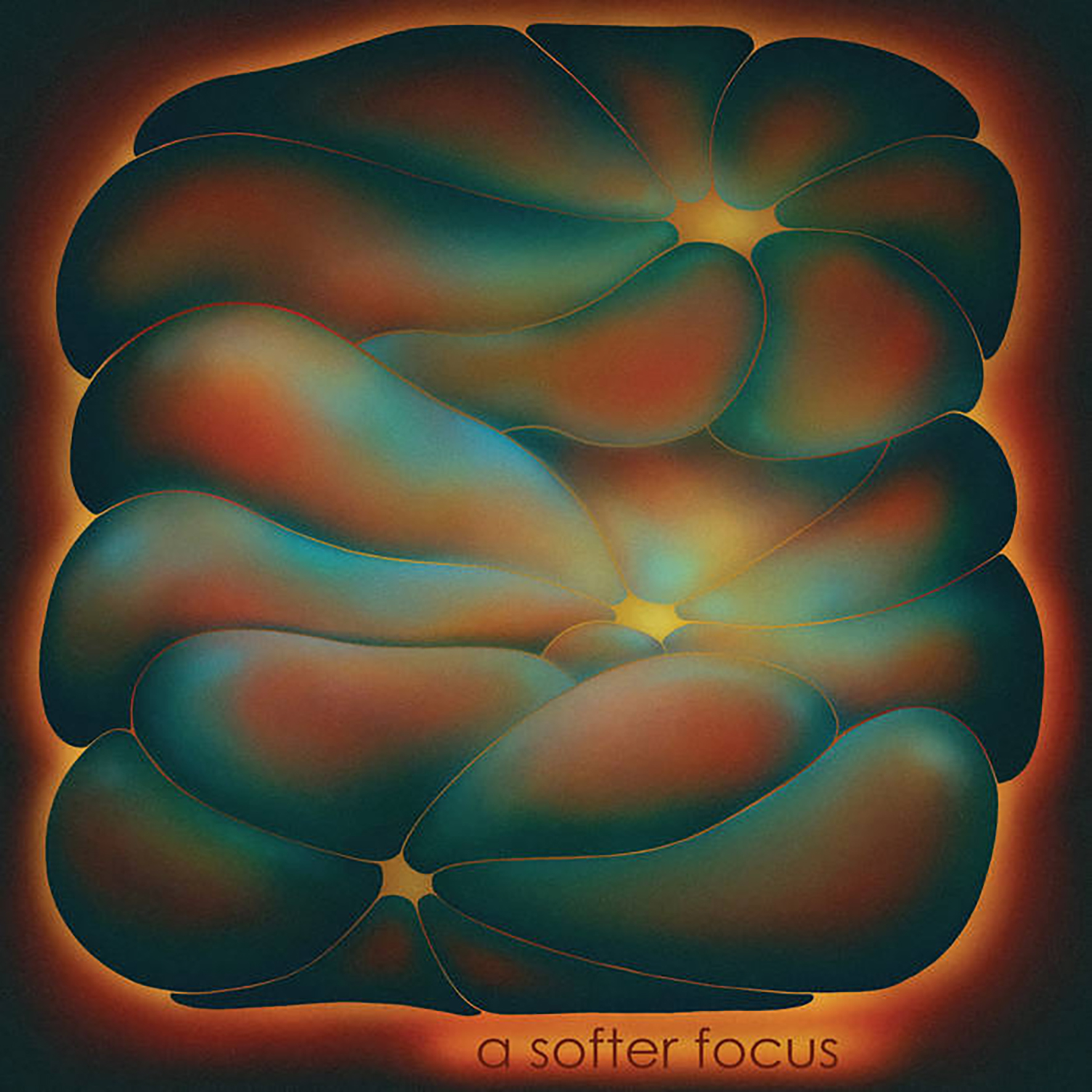
This latest release from the prolific claire rousay has been deservedly getting quite a lot of attention, as it can reasonably be called a creative breakthrough of sorts. At the very least, a softer focus documents an especially accessible and melodic strain of rousay's singular (if understated) vision. Obviously, most of the credit for that goes to rousay herself, as her work has always been on a upward trajectory, but this album was also significantly influenced by the involvement of visual artist Dani Toral, who is the creative force behind the album's non-musical content (cover art, videos, song titles, album title, etc.). While the artists' two visions seamlessly combine beautifully into one, some of the best parts as a pure listening experience involve the participation of less-central contributors, as my favorite pieces are warmed by violin and cello accompaniment from a trio of guest musicians. While I have always found rousay's work generally intriguing and unusually intimate, the more melodic and organic elements here definitely enhance her aesthetic wonderfully. This album genuinely feels like it is on a completely different level than most of rousay's previous releases.
After a brief and enigmatic introduction that sounds like a dictaphone recording of someone moving around a room and using a typewriter, the album begins in earnest with the absolutely gorgeous "discrete (the market)." It is essentially a continuation of the sounds from the opening "preston ave," but they are now joined by slow, beautiful drone swells and a shifting host of other elements (wind chimes, a tender piano melody, and an intensifying low-end surge). It evokes the sensation of blissfully lounging in an apartment on a perfect spring day while sunlight streams in, curtains gently sway, and sounds drift in from neighboring apartments and the street below. The following "peak chroma" is similarly excellent, as it feels like home videos of childhood vacations are flickering across a shimmering dronescape while an autotuned R&B jam plays on a fitfully operational radio. While "peak chroma" is ostensibly the album's hot single since it has a video, the next two songs are every bit as good, which adds up to an impressive four-song run of near-perfection. I especially enjoy how "diluted dreams" sounds like a reprise of the heavenly "discrete (the market)," but with added playground sounds and the impressive aural illusion of making me feel like I am slowly submerging in a bathtub. I also greatly appreciate the honesty and simplicity of rousay's overarching vision (using the mundane sounds of daily life as the building blocks for a deeper, more poignant whole), but it is the execution that makes this album such an immersive and wonderful delight, as the best moments feel like a warm and dreamlike fantasia of overlapping memories playing at different speeds. Rousay and Toral have done quite an impressive job of blurring the lines between sound art, visual art, poetry, drone, and pop in a pleasing and soulful way here, which is a definitely not a feat that many other artists could convincingly pull off so gracefully. I probably do not need to say this, but I will anyway: a softer focus is unquestionably destined to be all over "Best of 2021" end-of-year lists.
Samples can be found here.
Read More
- Eve McGivern
- Albums and Singles
 Forthcoming.
Forthcoming.
Ready later today.
Sound byte.
Samples can be found here.
Read More
- Anthony D'Amico
- Albums and Singles
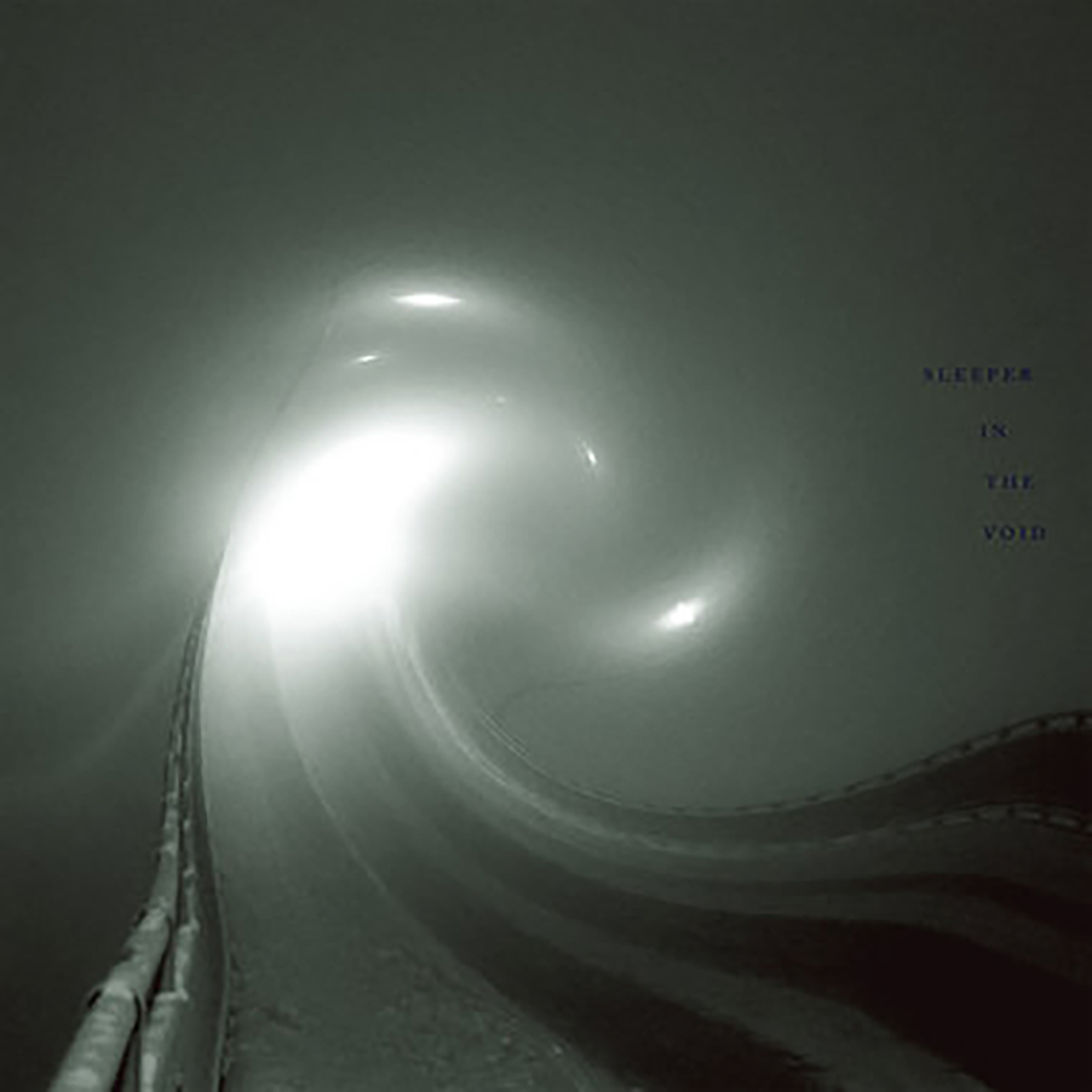
Miasmah celebrates their 50th release with this second solo album from Norway-based bassist/composer James Welburn. In some ways, this is a perfect album to add an exclamation point to that milestone, as Welburn and his collaborators take the label's "shadow music" aesthetic in an uncharacteristically epic and aggressive direction (though the same could be reasonably be said about 2015's Hold as well). Notably, Swans were invoked as a rough kindred spirit for Hold when it was released and that comparison seems apt here too, as Welburn certainly shares early Swans' love of raw textures and pummeling repetition. The similarities mostly end there, however, as Welburn's vision is considerably more abstract, deconstructed, and stylistically fluid and the individual pieces on Sleeper in the Void are significantly shaped by the collaborators involved. While I sometimes wish Welburn would take his aesthetic in a less texture- and rhythm-centric direction, he has a definite talent for bringing a blackened, visceral intensity to his brooding and gloom-soaked soundscapes. This is an impressively heavy album.
The fact that Welburn partially identifies as a bassist came as quite an amusing surprise to me, as I would have guessed that he was a drummer: not because the drumming here is conspicuously better than the bass playing, but solely because the heart of this album seems to be slow, punishingly primal percussion. That said, I do not question Welburn's love of bass frequencies, as rumbling low-end heaviness is recurring theme too. His style has been described as "reductionist, monolithic, and raw" and it is certainly all of those things, yet the best songs on this release tend to be the less reductionist and monolithic ones, which is why the collaborators loom unusually large. Drummer Tomas Järmyr turns up most frequently, enlivening "Raze" with a thunderous crescendo of rolling toms and supplying the killer doom-lurch of the album's best song ("In and Out of Blue"). Vocalist Juliana Venter appears on the latter as well, contributing a layered climax of chopped and manipulated wails and warbles. I believe Welburn himself is responsible for the awesome gnarled guitar hook though, as well the piece's sheer seismic force. Venter returns once more on the closing "Fast Moon," as her voice drifts through the violent shoegaze of its surroundings like a ghost. Hilde Marie Holsen, on the other hand, only appears once, contributing a tenderly undulating pulse of dreamlike drones to the album's least hostile piece ("Parallel"). While Welburn is only completely solo on a single piece ("Falling From Time"), that one is admittedly a hell of a banger, beautifully combining psychotropic smears of darkly twinkling organ and a wonderfully pummeling and machine-like rhythm. "Fast Moon" is similarly industrial-tinged and those looping, machine-like rhythms definitely suit Welburn's aesthetic quite well. I hope they stick around for the next album. I hope Welburn's collaborators do too. In fact, I wish the foursome would just form a damn band, as Welburn's greatest gift lies in simply making everything sound crushingly heavy and it would be nice to hear him do that with a more varied palette of sounds and textures. For now, however, Sleeper in the Void is an impressively bracing dose of bass-heavy brutality.
Samples can be found here.
Read More
- Administrator
- Albums and Singles
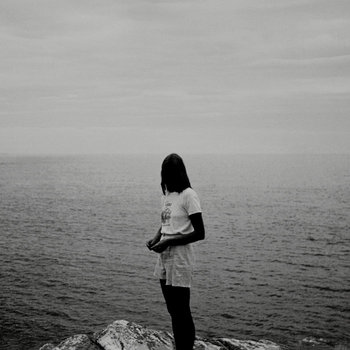
Midwife is the moniker of multi-instrumentalist Madeline Johnston. She lives and works in San Miguel, New Mexico by way of Denver, Colorado, where she spent the better half of the past decade developing her experimental pop project. As a self taught guitarist and recording engineer, Midwife explores dark subject matter in her anthemic, soft-gaze hits. Self-described as "Heaven Metal," or emotive music about devastation - catharsis.
When 2020 began, Johnston had several national and international tours planned, but the pandemic shifted her focus back to recording, and back to her internal landscape. Midwife’s third full length record, Luminol, was written and produced during quarantine.
Luminol is a chemical used by forensic investigators to reveal trace amounts of blood left at a crime scene. When it reacts with blood, luminol emits a chemiluminescent blue glow that can be seen in a darkened room. In the same way this chemical reveals evidence at a scene, Midwife is interested in profound truth - turning trial and tribulation into sources of light.
Luminol navigates themes of incarceration, locus of control, clarity, self harm, confinement, agency, and truth-seeking, all erupting in a bioluminescent Rothko color-field of blue.
The Luminol album cover shows a dark figure standing at the edge of a body of water. It symbolizes the way humanity had been on a precipice throughout 2020, to later find out they had been there all along. Being one of Midwife’s most personal records, Luminol's cover artwork is a picture of Madeline Johnston's mother taken in the 1980s, when she was the same age as Madeline at the time of recording. By redacting the figure, Johnston hopes that anyone could see themselves there, by the water, as a form leftover when all the elements of their lives are stripped away and what is left is a host.
Out July 16, 2021 on The Flenser.
Read More
- Administrator
- Albums and Singles

Angel Bat Dawid
Harkening Etudes
Chicago-based Angel Bat Dawid has proven a fluid and electric artist, working largely in the realm of jazz. Her first love however was for Mozart, and with Harkening Etudes, the revelatory composer and soothsayer offers a suite for clarinet and piano rooted in classical music, while also showing her place at the forefront of modern, free-thinking jazz. Full of ecstasy, intrigue and character across its three movements, it is surprising, or unsurprising work from Angel, depending on your view of her elastic approach.
"I wanted to include breath as part of the listening process. I really want folks to inhale and exhale and then go on a ride of different sounds. Breathe into your ears…they need air too." -Angel Bat Dawid
Theodore Cale Schafer
It's Not a Skill, it’s a Curse
Detroit's Theodore Cale Schafer says his piece It's Not a Skill, it’s a Curse is "a handful of ideas," but this casual inference belies his gift for distilling abstraction into disarming emotion.
"I usually try not to talk too much about my own music. I feel like it has a face value and everything else drawn from it is reflection. It has personal meanings, but in a way that is abstracted and singular." Theodore Cale Schafer
Judith Hamann
Hinterhof
Cellist, performer and composer Judith Hamann has worked with the likes of Eliane Radigue, La Monte Young and Alvin Lucier, and similarly these artists all invite great a curiosity and compulsion in their works. The fascinating Hinterhof is a recording of the porous spaces around Hamann's Berlin apartment. Hamann interacts with her space, creating a kind of collectivity within the reduced environment.
"I had been thinking about the idea of collapse in relation to sound fields…days into days, different kind of spaces and weather and time into each other, and whether that can create a new imaginary listening space…can you consider yourself part of a community that is framed only by a shared listening experience?" -Judith Hamann
r beny
we grow in a gleam
Finally, r beny is the project for Northern California's Austin Cairns, finding resonance for his work in the idea of nature as an imagined entity and not just part of the physical world. We Grow In A Gleam has a patient, sustaining measure that mirrors this sense of escape.
"This piece of music is a map. Tones, textures and echoes representative of a geography and a time." -r beny
More information can be found here.
Read More
- Anthony D'Amico
- Albums and Singles
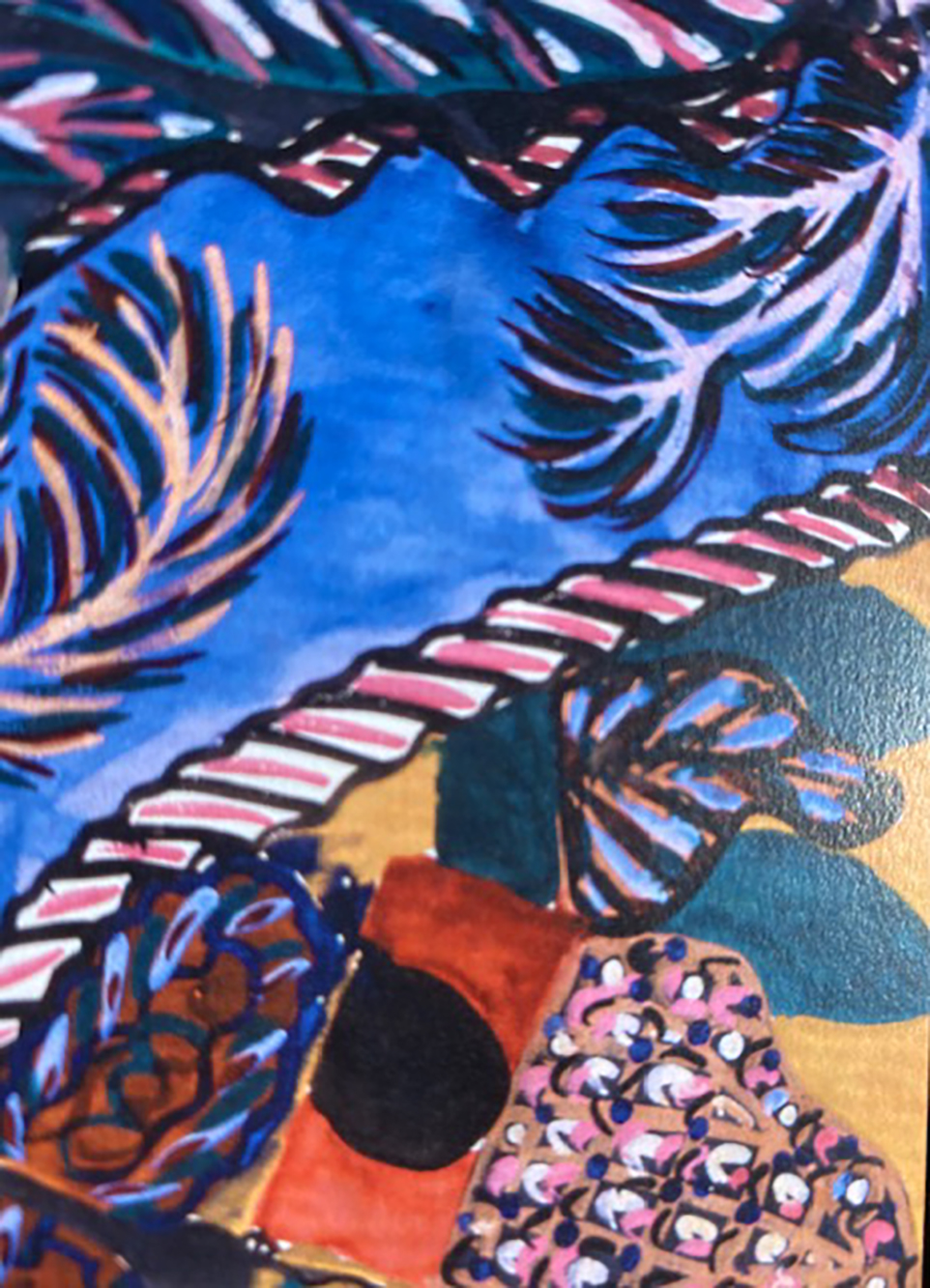 Important Records' Cassauna imprint has quietly released some woefully underappreciated stunners over the years and the latest one to blindside me is this brief yet near-perfect tape from The Spring Press's Jeff Burch, whose work seems to steadily grow more compelling each time he surfaces. While last year's collaboration with Tres Warren explored similarly heady and timeless "deep psych" territory, Samum Suite takes a very different route to get there, as it was composed and recorded primarily with acoustic instruments at the edge of the Sahara Desert. I am always delighted when acoustic drones, Eastern modalities, and field recordings collide in a pleasing way, but this album feels like it was recorded in an entirely different timeline in which The Theatre of Eternal Music relocated to Morocco and got assimilated into The Master Musicians of Jajouka. Sadly, that is not the timeline I wound up living in, but Samum Suite legitimately feels like the kind of album no one makes anymore. Or maybe ever made. While plenty of artists have borrowed liberally from traditional Middle Eastern sounds in service of their own vision, Burch seems to have achieved full ego death and dissolved into the streets of Morocco only to re-emerge with a beautifully crafted collage that replays his experiences as a hypnotic swirl of sensory impressions.
Important Records' Cassauna imprint has quietly released some woefully underappreciated stunners over the years and the latest one to blindside me is this brief yet near-perfect tape from The Spring Press's Jeff Burch, whose work seems to steadily grow more compelling each time he surfaces. While last year's collaboration with Tres Warren explored similarly heady and timeless "deep psych" territory, Samum Suite takes a very different route to get there, as it was composed and recorded primarily with acoustic instruments at the edge of the Sahara Desert. I am always delighted when acoustic drones, Eastern modalities, and field recordings collide in a pleasing way, but this album feels like it was recorded in an entirely different timeline in which The Theatre of Eternal Music relocated to Morocco and got assimilated into The Master Musicians of Jajouka. Sadly, that is not the timeline I wound up living in, but Samum Suite legitimately feels like the kind of album no one makes anymore. Or maybe ever made. While plenty of artists have borrowed liberally from traditional Middle Eastern sounds in service of their own vision, Burch seems to have achieved full ego death and dissolved into the streets of Morocco only to re-emerge with a beautifully crafted collage that replays his experiences as a hypnotic swirl of sensory impressions.
The heart of Samum Suite is a pair of field recordings that Burch made during his travels back in 2015 (a Khatna procession in Tangier) and 2017 (street musicians in Marrakech). While "Muslim circumcision parade" is certainly an enticing thread to encounter on an album, Burch incorporates the festivities in a purely impressionistic way, evocatively conjuring a vibrant, richly textured, and enigmatically exotic (to me) street scene. The Marrakech musicians likely provide the clattering percussion and winding melody that open the album, yet the magic of this four-part suite lies in how blurry the line becomes between the field recordings and the eclectic host of instruments played by Burch and his guests. Admittedly, the clarity of the recordings provides some differentiation, but it never feels like Burch merely added an organ to some cool sounds and called it a song. Instead, the album feels like an endlessly dissolving fantasia of dreamlike vignettes that grows steadily deeper with each new section. Each segues seamlessly into the next, so the delineation between individual parts is largely academic, but the suite starts to catch fire near the end of "II" when the percussion fades away to leave a lysergically spectral haze of warbling tones in its wake. From that point onward. Samum Suite feels like an organically effortless, gorgeously psychedelic reverie, as haunting woodwind drones appear like a shimmering oasis over a simmering and subdued backdrop of found sounds and twanging baglama. The return of the warbling tones heralds the transition into the fourth and final part, in which blurred, sustained tones lend a soft-focus unreality to the raw, clattering jubilance of the Khatna procession. The whole experience lasts less than twenty minutes, which probably explains why Samum Suite is modestly entering the world as a tape, yet the arc is a perfect one and I am pleased that Burch had no inclination to dilute his sublime distillation into an LP. Had it been recorded by Roberto Musci or Futuro Antico in the '80s rather than by Jeff Burch in 2021, Samum Suite would likely be a much-sought classic that would cause a feeding frenzy when inevitably reissued by Black Sweat.
Samples can be found here.
Read More
- Duncan Edwards
- Albums and Singles
 In 2017, C-Schulz’s late '80s-early '90s work was compiled in this mesmerizing album. Barely in his twenties, Schulz created some genre-defying music which, although clearly located between the kosmische music of 1970s Germany and early techno-electronica, resists easy classification or dating. The compilation is impossible to become bored with since it is memorable and satisfying yet so unpredictable that it is strangely difficult to recall the atmosphere and pace of individual tracks. This sprawling array of shifting sounds can perhaps be understood as the equivalent of a classic neuroscience memory test where the subject tries to recall 20 unrelated items after they have been covered by a cloth. I remember a Dada collage, industrial rhythms, a tiny piece of acid funk, library musique-concrete, heavy breathing, carbonated liquid cracking ice cubes, galloping static and clattering train tracks, looped chanting, economic radio news chatter, giggling children, a growling beast, a racing heart beat, poignant brass and synth tones.
In 2017, C-Schulz’s late '80s-early '90s work was compiled in this mesmerizing album. Barely in his twenties, Schulz created some genre-defying music which, although clearly located between the kosmische music of 1970s Germany and early techno-electronica, resists easy classification or dating. The compilation is impossible to become bored with since it is memorable and satisfying yet so unpredictable that it is strangely difficult to recall the atmosphere and pace of individual tracks. This sprawling array of shifting sounds can perhaps be understood as the equivalent of a classic neuroscience memory test where the subject tries to recall 20 unrelated items after they have been covered by a cloth. I remember a Dada collage, industrial rhythms, a tiny piece of acid funk, library musique-concrete, heavy breathing, carbonated liquid cracking ice cubes, galloping static and clattering train tracks, looped chanting, economic radio news chatter, giggling children, a growling beast, a racing heart beat, poignant brass and synth tones.
Unseen Worlds
For all the juxtaposition and surprise, this is an uncluttered and precise soundtrack of sustained tension which, decades later, sounds neither dated nor gimmicky. Music does not need a purpose but Schulz's could be suited for waking an astronaut from a deep space pod in the year 3000, or for having a panic attack sipping cocktails in a late-1960s airport lounge as the Mike Sammes Singers refuse to be drowned out by occasional road drills. Marcus Schmickler co-produced many of the 20 tracks and he contributes liner notes. Frühe Jahre came to my attention three months ago when (aged 64) I began a vicious bout of shingles. When it seemed nothing could distract from that nightly agony, thank God for these glorious, innovative, and timeless recordings.
Read More

